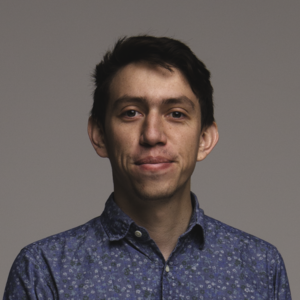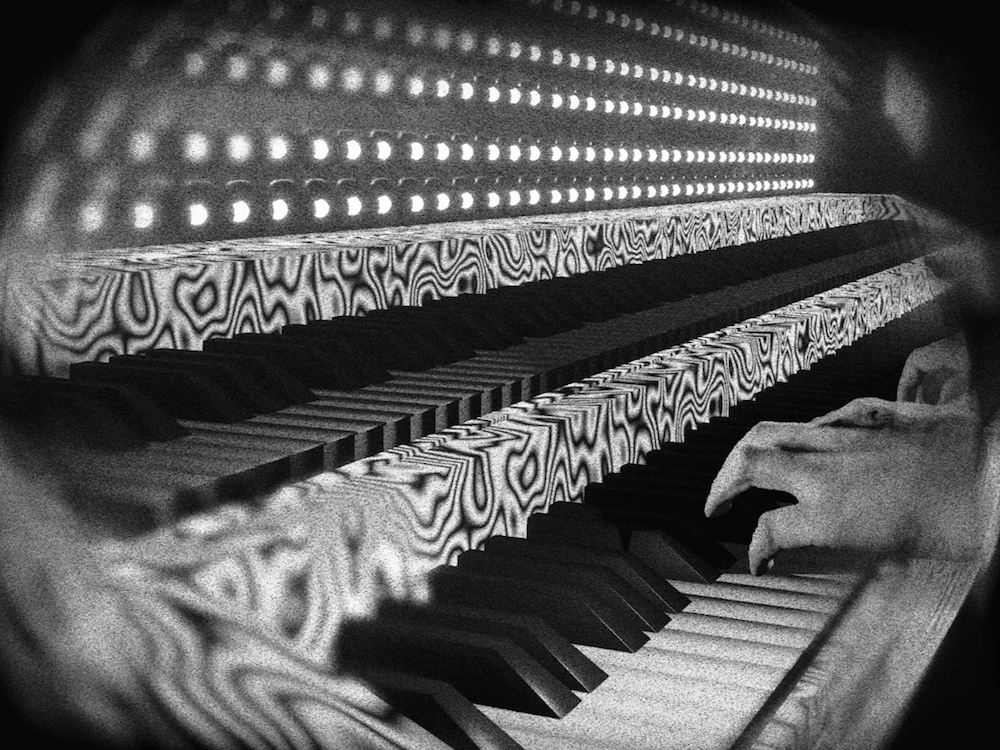Animation Conversations: Directing Student Cooper Troxell
Animation Conversations is an interview series with Film faculty, students, and alumni where we discuss working as screenwriters, directors, and producers in the animation industry.
This week, we sat down with Directing student Cooper Troxell to talk about his experience directing Space Vamps, his singular animated short that played at CUFF 2021, as well his recent experience working as an animator for the hit Showtime series ZIWE.
Cooper Troxell is a New York–based filmmaker completing an MFA in Film Directing at Columbia University. He edited and co-produced the feature Queen of Glory, which was selected for the 2021 Tribeca Film Festival. He is also a director and editor of commercial projects. His clients have included Nickelodeon, BBC America, Tommy Hilfiger, Tidal, and House of Waris. He’s currently preparing to shoot his final thesis film for Columbia, and is also working on a longer-form version of Space Vamps. In the original short, Space Vamps follows a rag-tag group of space vampires as they reach the end of a centuries-long journey through space, only to discover their problems have just begun.

What drew you to the Film Program at Columbia?
Cooper Troxell: My first artistic passion was music composition, which I studied in college. I was into avant-garde classical music. When I graduated from college, I started trying to make music videos for these things, and then at a certain point, I realized I was more interested in using the camera and figuring out how that kind of music worked. Because of my background being so far from a more conventional path for film—not that there is one—I really wanted to learn about storytelling from a writer’s perspective and the language of film.
I watched some of your early animated directing exercises from your time in the program. Tell us a little bit about that.
CT: The beginning of it was in Directing 3, and I had Amos Gitai, an Israeli filmmaker [as my professor]. The first week, we all had to pick an article out of the newspaper and make a short film based on that article. At a certain point, I needed to show him something, so I drew these storyboards. I animated them, put music to them, and told him, “This is what I’m going to shoot.” And he said, “Why isn’t that the movie itself?” That was a fun lightbulb moment for me.
When COVID happened, I was stuck in a room by myself. I had been playing around with 3D modeling programs and trying to figure out this animation style. I had no camera, no actors, and no location, so if I could figure out a way to make something, this was going to be the time to do it.
How has your time in the program informed your approach as an animator?
CT: I hesitate to call myself an animator because it’s an entire tradition and culture. What I figured out was how to use the things I learned at Columbia, like silent film grammar, the basics of setting up a shot in order to create a feeling, camera placement first and foremost, and apply them to animation. I thought if I focused on these ideas, then a lot of the animation would be simpler. In larger, professional animation situations, it’s often the case that you want to light it so you can see everything, and all the detailed work that people have put hundreds of hours into is fully in the frame. [With Space Vamps], I landed on this Fritz Lang German Expressionist style because I thought, if there are any problems with any of the modeling work that I’m doing, it’s just in light and shadow. You have more forgiveness in a style like that.
Where did the idea for Space Vamps come from?
CT: I think it is very much about that first month of lockdown where we didn’t know what was happening. I had some kind of feature film idea from way back when about these vampires in the 1920s who take over a film lot and make their own studio films. Once COVID happened though, and we were all stuck in our individual rooms, there was something about that feeling of being trapped in a coffin and wanting to go out into the sunlight, but actually the sunlight, the air—all these things that are supposed to be good for you—are the worst possible things for you at that moment. [Space Vamps] felt like a visual representation of what I was feeling.
What was the production process like for Space Vamps?
CT: The planning for this short was completely backwards from any other film I’ve done before. Basically, I started playing with these images, and when I had maybe 25 seconds of material, I sent that to my composer, George Hutson Warren, who is a genius. Neither of us had anything to do—all of our plans had been canceled [due to the pandemic]—so I would just send him something, and he would send me something back. We didn’t really know where we were going with it, and I think the end result is that the relationship between the sound and image is very tight because they were actually built together. Kári Úlfsson [fellow Columbia student and the producer of Space Vamps] came in soon after that and gave us tons of feedback about what direction we were going in, how we could make the aesthetic of this feel cohesive and unified.
What was it like completing the animation work for Space Vamps?
CT: By the end of it, there were about twelve different programs that I used to put all these images together. Basically the idea was to recreate a silent movie style using CGI techniques. A large majority of the work happened in Blender, which is a free 3D-modeling program. That led me to get the first renders of these images, and when it comes out of there, it looks like the worst 90s video game you’ve seen in your life. So then from there, it was this process of looking at the old silent films and figuring out what are those artifacts that when you see them, it makes you think “Oh yeah, this is definitely an old silent film”. For example, a lot of those old lenses, the focus is not evenly distributed through the frame, so at the corners it starts to get a little blurry. Also very high contrast lighting. Really trying to find ways to beat up the image so it didn’t feel clean or controlled. It was an interesting process figuring out how to light things in a CGI environment.
Your likeness also appears in the short. Could you tell us a bit about how you accomplished that?
CT: Early on, I considered green-screening myself in, but the problem with that was that I didn’t have any lighting equipment and it just felt like that wasn’t the right way to go. But I did have a camera, so I took a photograph of my face from twelve different angles. From there, I built a 3D representation of my head and I mapped those photographs onto it. The benefit of that was that you could actually light it in the 3D environment. It also felt like there needed to be some humanity in the short—that this is a real person—so I used my iPhone and recorded footage of my hands. I rotoscoped out those animations frame by frame, then got rid of the background. When I threw it on this crunchy black-and-white picture, it kind of feels like it fits. There’s then this level of reality to it that there isn’t in the rest of the film.
What were some of the creative challenges of a project like this?
CT: The huge challenge was that you couldn’t have people speaking, and you can’t really show them moving. The times [in the short] where you do see people walking or running are actually these automated key frame animations that you then map onto something. I, at the time, was not able to edit the key frame animations themselves, so the question became, how do I convince people this is real? One of the things that Kári pointed out early on was that the times where I used the least amount of sophistication were often the times when it was the most convincing, because we knew through the camera that we had to hide all the stuff that wasn’t real. That was always the challenge: you have an idea, you think you know the way it needs to go, and then you find out it’s impossible, so how do we find a better alternative that feels intentional?
You also recently worked as the animator for the “American Girl Doll” sketch on the Showtime series ZIWE. What was that like?
It was amazing. I actually got that opportunity through another Columbia grad named Jamund Washington '10, who is an executive producer and writer on ZIWE. I had edited a feature film that Jamund produced that came out this year. He reached out and asked me if I could do stop motion animation. That weekend I rushed to Target and bought some American Girl Doll knock-offs on deep sale and in my kitchen, I tried to shoot the first scene of the sketch and sent that to the ZIWE team. It was a really fun process. It was my first time working as an animator for someone else, and obviously the script for the sketch was so good that really all I had to do was to make sure I could support this amazing script, focus on the visual element only, and find the best possible solution. It was an extremely pleasant and easygoing process.
Did that experience make you want to try to animate for other projects in the future?
Absolutely. Whatever comes up, I’m ready for it. That was a huge lesson from both Space Vamps and the ZIWE animation—if somebody is asking you [to do something], they probably think that you can do it, so you should just trust that. They believe in you.
Do you have a favorite animated work that’s been an important touchstone for you?
In terms of technical possibilities, Spider-Man into the Spider-Verse. They rack focus in that film, and the Ben Day dots move out of alignment because it’s a comic book. There’s just a million things that they said, “Yes, this is all going to work together and we’re going to make it work”. That was definitely at the top of my mind when I was trying to figure out my own visual language. When I was trying to figure out if I could merge live-action and animation and all these styles, I would think about what I read about their process of experimenting and continuously trying to find the right technique.
